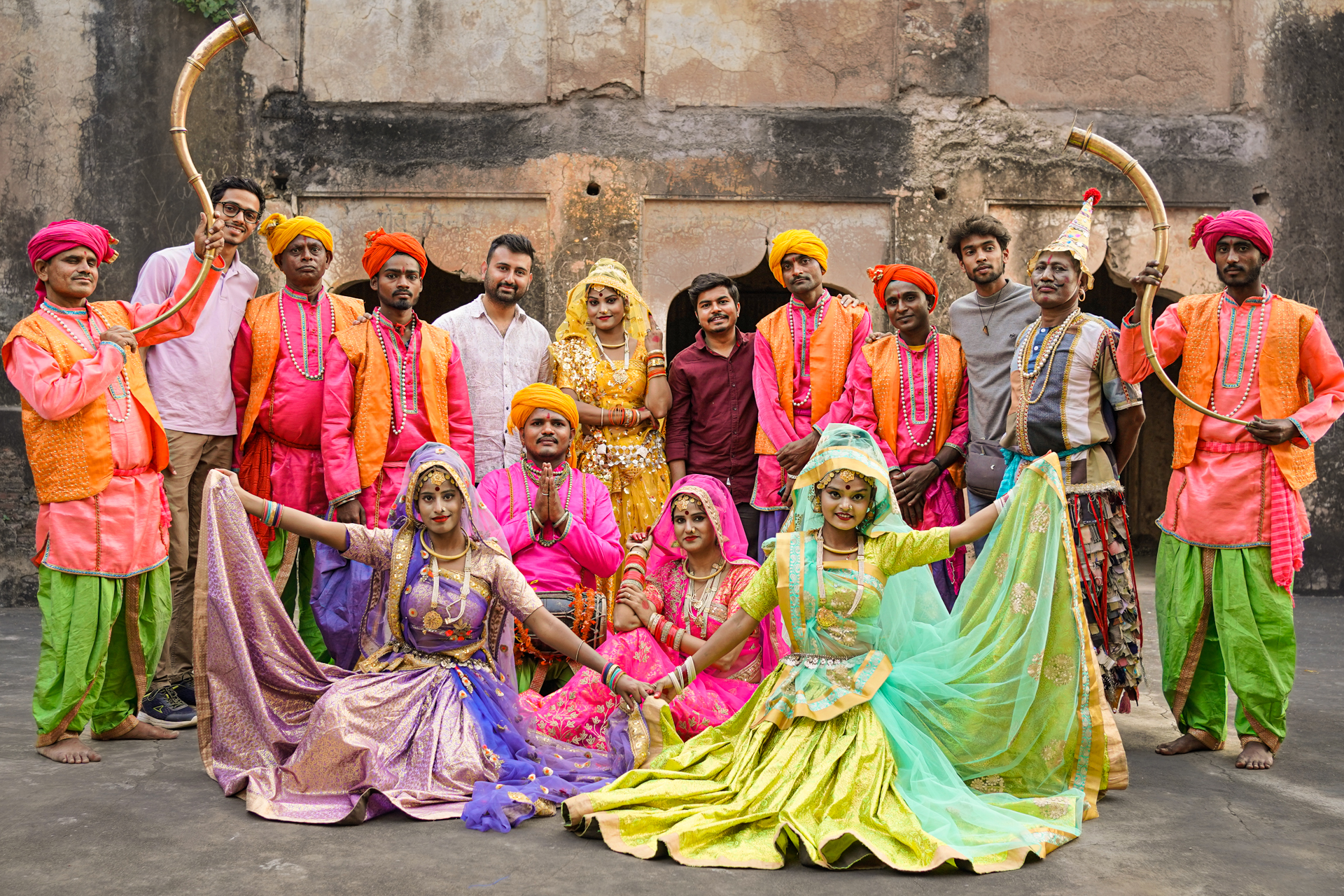
The overlong, swirling Ghagras of Rai
Radha, a young dancer from Jhansi, is paving the way for preserving a declining dance in its true, traditional form.
Radha Prajapati, a 28-year-old dancer from Jhansi, believes that the traditional art forms of her region, Bundelkhand, should be held in high esteem in the minds of the public at large. She contrasts this with the status of the art forms from Punjab and Haryana, which are better known and enjoy visibility in mainstream art, which they have also influenced. This was not always the case and has only happened because of the artists who have asserted the rich history and artistic appeal of their art forms through campaigning and pushing them beyond the boundaries of their native regions. Radha takes inspiration from this and wants to achieve the same for Bundeli art forms.
Her group performs Rai, a traditional Bundeli dance that involves energetic and playful dancing to entertain the audience in festivities and other celebrations. Over the years, though, the dance has come to be commonly associated with the Bedia tribe and is infamous for its sensational lyrics, suggestive dance and revealing clothing. Radha explains that this increased its popular appeal, and the tribal people wanted to improve their income. She caustically points out that although vulgarity sells, much deeper harm is done in the process, as it diminishes respect for the traditional arts in the people’s perception and alienates them from their own culture. Intending to revive the art form in its original glory and care, she has started her dance group and has been staging performances for about three years now.
Women wear long ghagras, skirts with colourful patterns, and many fringes that measure 10 to 12m long, and they are the most recognisable feature of the dance. When the dancers twist and twirl to the music, the ghagras create a beautiful pattern resembling milk churning. Rai derives its name from that, as the churn is called Rai in the Bundeli language. Rai also has an alternative etymology, as explained by Brahmadeen, the senior-most member of the group. Rai could also refer to sarson, mustard seeds, and the dancers’ energetic jumping and swinging resemble mustard seeds spluttering in hot oil. Both meanings perfectly capture the spirit of the performance, which centres around being merry and celebrating life. Historically, the dance was performed during the harvest season. Women would dress in ornate clothes, sing about the rains and harvest, and praise Lord Ram and Goddess Sita. The dance also involves playful banter with the men and the women and themes from the story of Lord Krishna and gopikas.
Radha started training in dance at a young age, partly out of her interest but also to support her mother financially after her father’s death. Her mother worked as a cook to help the children, but since Radha started performing, she claims to have never had any financial difficulties. She believes that the richness of traditional art forms keeps them going even in the face of popular art threatening to extinguish them. While she is a woman of many talents, having modelled and acted in a few regional films and even sung a few songs, she considers her work as a Rai performer and the achievements of her group as most fulfilling artistically.
Although the troupe is only three years old, they are already immensely popular, having performed at Namaste Trump! and Dubai Expo. They were the only Bundeli performers at both events. Radha believes it is her group’s commitment to authenticity and attention to detail – be it in the costumes, the dance or the choice of lyrics for their songs – that sets them apart. They remain committed to presenting respectable, family-friendly performances that celebrate Bundeli culture. Brahmadeen Bandhu, the senior member of the group and serves as a mentor figure to the group, comes with about 40 years of experience performing Rai. He performs as the stooge (joker) in the performances, whose exaggerated expressions are very amusing. He retired from the Indian Railways and used to manage the cultural department, where he performed Rai and other traditional art forms.
Ankur Jain is the other male dancer who also serves as its manager. He comes from a business family but took a special interest in Rai upon seeing a performance at an event a few years ago. For the first time in his life, he saw an authentic, traditional Rai performance, which was eye-opening. He was inspired by Radha’s vision to change the perception of Rai in people’s minds and improve its stature as a respectable art form. With no background in dance and performing, he started as a complete novice with the group. Although he primarily earns his living as a property broker and a construction worker, he is equally invested in performing and promoting Rai. He even teaches the art form in schools and colleges to encourage children to discover their cultural heritage.
Accompanying them is a singer, and musicians, of whom the trumpeters also double as dancers. The dance involves many different formations where the dancers swing their ghagras to create visual patterns. Radha also stresses the importance of ghoonghat in the performance, which is an essential symbol of modesty of the dancers and is also aesthetically appealing to the Bundeli people. The dance, which has long been ignored as a lesser art form of the sleazy entertainers, is now slowly regaining prestige and respect through the work of people like Radha Prajapati. This year, a Rai performer from Madhya Pradesh, Ram Sahay Panday, also received the Padma Shri for his contribution to the arts. Radha holds this as an inspiration to continue promoting the art form. She believes that good, authentic works ultimately reap the rewards in the long run, and she aims to continue her tradition in the coming years.
